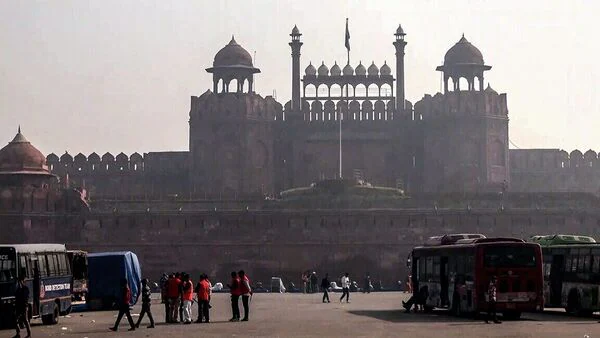
Explained TATP, Aka 'Mother Of Satan' Bomb, Investigators Think Was Used In Red Fort Car Blast
Initial evaluations indicate the bomb may have involved a mixture of ammonium nitrate, fuel oil, other chemicals, and a possible TATP element, collectively forming a large explosive load.
Also Read | Delhi blast update: Three cartridges recovered from the site, no weapon foundCCTV visuals showing a sizable bag taking up much of the car's back seat appear to support this assessment.
The explosion's impact was strong enough to be felt several storeys below ground, and human remains were discovered across a wide surrounding area.
Why is it called "Mother of Satan"?The“Mother of Satan” is the nickname given by terrorist groups like al-Qaida and ISIS to TATP. Nicknamed the“Mother of Satan” for its extreme volatility, this compound reacts violently to friction, shock, heat, or static discharge, often exploding without warning and claiming the lives of those preparing it.
As a primary explosive, it detonates instantly rather than burning, generating a sharp shockwave with minimal fragmentation.
Also Read | Delhi blast: Lal Quila Metro CCTV captures moments of Red Fort car explosionTerrorists prized TATP because it can be synthesised at home using common household or easily obtainable ingredients, primarily acetone (found in nail polish remover), hydrogen peroxide (in hair bleach or disinfectants), and an acid catalyst like sulfuric acid-without requiring specialised lab equipment or detection by many traditional explosives scanners (as it's nitrogen-free).
Its detonation velocity exceeds 5,000 meters per second, and it generates significant overpressure in enclosed environments, making it destructive in urban attacks such as subway or concert bombings.
Also Read | Delhi blast: Why J&K police seek Red Corner Notice against Dr Muzaffar Rather?TATP usually presents as a white crystalline powder, but contaminants can give it a tinted appearance. It consists primarily of cyclic trimers, with lesser amounts of dimers and related structures.
Despite its makeshift origins, TATP rivals high-grade explosives like C-4 in small-scale applications, delivering devastating blast pressure within enclosed areas.
Delhi blast updateDelhi police have already arrested Dr Adeel Ahmad Rather, Dr Muzamil Shakeel and Dr Shaheen Saeed in connection with the Delhi blast case, as they had an alleged link to past terror cases.
Further, Investigation agencies on Thursday informed that around eight suspects were allegedly preparing to execute coordinated explosions at four locations, with each pair assigned to a specific target city.
Preliminary investigation indicates that the accused groups had intended to move in pairs, each carrying multiple improvised explosive devices (IEDs) for simultaneous attacks.
Also Read | Delhi blast update: Security forces demolish Pulwama house of Dr UmarDelhi Police confirmed that the man who carried out the car blast near Red Fort was Dr Umar Un Nabi, after forensic DNA testing matched his biological sample with that of his mother.
However, Al-Falah University has distanced itself from Dr Umar and Dr Muzammil, stating that the University has no connection with the accused beyond their official capacities, and that no questionable chemical or material is being used or stored on the University premises.
Essential DNA, explosive, and other samples have been collected from the site and sent for forensic examination. The investigation has been handed over to the National Investigation Agency.
(With inputs from agencies)
Legal Disclaimer:
MENAFN provides the
information “as is” without warranty of any kind. We do not accept
any responsibility or liability for the accuracy, content, images,
videos, licenses, completeness, legality, or reliability of the information
contained in this article. If you have any complaints or copyright
issues related to this article, kindly contact the provider above.


















Comments
No comment